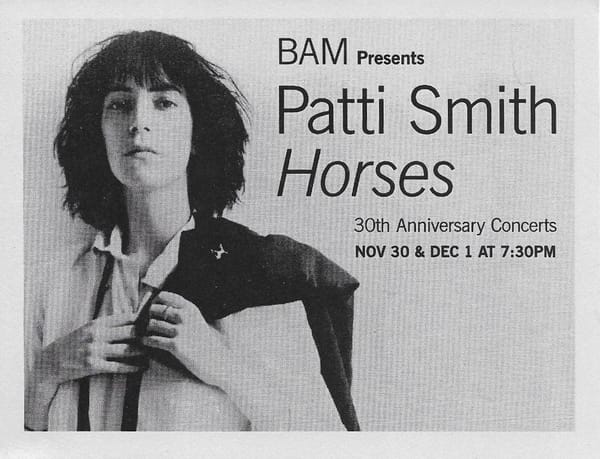Anita Pallenberg & Catching Fire
Catching Fire, the new film about the life of Anita Pallenberg, begins with Anita’s own words: “I’ve been called a witch, a slut, a murderer.”

jukeboxgraduate dot com is a newsletter about rock and roll, written by Caryn Rose. everyone is able to subscribe for free and most posts are free to subscribers; some posts in future will be for paid subscribers, but most will remain free to everyone. thanks for your interest and support.
Catching Fire, the new film about the life of Anita Pallenberg, begins with Anita’s own words: “I’ve been called a witch, a slut, a murderer.” and it was with that opening salvo that I understood exactly what this movie was going to do.
It’s a line taken from Anita’s unpublished memoir, which, in the film, is read by Scarlet Johansson. There’s a shot of a room with a desk that could have been from some ancient palace, but it was Anita’s office and the walls are lined with photographs of her and photographs of Keith. The film cuts to a man who even without titles could be no one other than Marlon Richards, Keith and Anita’s first child – he vividly resembles both of his parents – and he explains that after his mother died, he and his family were going through her papers, looking for legal documents, and one of the things they found was a perfectly typed manuscript of her memoir. And, so, here we are.
Anita Pallenberg was a survivor, a trendsetter, a fashion icon, a muse, a glamorous representative of London in the Swinging 60’s. Her family lost everything in World War II and she parlayed her looks and her love of American rhythm and blues to escape her conservative Italian family to come to the States. She got a job as a model, she hung out at the Factory, she socialized with artists. She got sent to Germany on an assignment and one of her friends dared her to kidnap one of the Rolling Stones. Keith was shy, Mick was – “not dancing yet, he was just shaking maracas” (Anita’s words, the world’s most elegant diss of Mick Jagger ever) – and then there was Brian. Brian was beautiful. She had hashish. All she had to do was offer.
Anita was fabulous but Anita was vilified. She was gorgeous but she was dangerous. She was accused of both using and destroying the Rolling Stones. Growing up as a rock and roll fan in the Seventies you never wanted to be compared to someone like Anita Pallenberg, except that we all secretly did. We wanted to dress like her, we wanted to look like her, we wanted to have that kind of glamorous and sensational life. She was there, in the middle of it all. And then it all fell apart, mostly because of drug addiction.
“We had our own power,” Marianne Faithfull says in the film. “We didn’t want to be with them because we wanted some of their power.” Anita was -- still is -- castigated for having slept with three of the five Rolling Stones, as though she was some kind of evil temptress and the men involved had no agency of their own. The Stones were always saying that straight peoples’ morals didn’t apply to them, but that didn’t extend to the women in the circle. They wanted her as much as she wanted them, and from what Anita says via her memoir in the film, she ended up with Mick because they were spending weeks together in bed filming Performance, and what else were they supposed to do. It was the 60s.
But her sex life – which wasn’t that different than the men around her – made her a terrible person because the 60s didn’t eliminate patriarchy and general misogyny. Her behavior is why people thought she was a witch – how else could she possibly captivate all of these men – or tried to blame her for the death of Brian Jones, for Keith’s drug addiction, or for anything else that was convenient. The media at the time was almost all men, who wanted access to beautiful women and resented being ignored. She was gorgeous and talented and spoke at least four languages fluently. She was a brilliant actress but ended up not pursuing that work because of drugs and because her boyfriend didn’t want her working. No one ever talks about that part. We are struggling now on how, or if, to separate art from the bad behavior of the men who have made it. I have obviously not given up on the Rolling Stones and I don’t see that changing but there are times it does not feel great. This is one of those times.
The story of Anita Pallenberg is the uneven application of morality and free love. If the women don’t participate, they’re square and frigid, but when they do, the broken hearts or bruised egos are their fault. Marianne Faithfull became the focus of the Redlands bust, the naked girl in the fur rug. The machine was already working to distract you from looking too closely at the Stones.
A recurring element in the film are the stories that lead to the revelation that a particular incident with Anita inspired a legendary Rolling Stones song, as though there needs to be some kind of tangible proof that justified her existence. Her existence extends out over swinging London and the 1960s and teaching Keith Richards how to dress, the appropriate deployment of leopard print and crushed velvet and fur coats and hats.
She survived the war. She was a model, she was an actress, she was herself. She could just have been herself, except there wasn’t enough room for her and the Rolling Stones in the same space. By the time she could have figured that out it was too late.
The film is a documentary and not fiction, but in Anita’s own words, “it’s more like memory-images.” She wisely knew that was the best she was going to be able to manage, and instead of not doing it, she attached the disclaimers and foraged ahead. In so many ways that is exactly how Anita Pallenberg went through the world. You make accommodations, you adjust your reality.
Catching Fire succeeds at telling a story about Anita’s life in Anita’s words, but it also is absolutely a moment of reckoning for her children. Marlon Richards (who is also the executive producer) is the first person we meet, and later on we’re introduced to Angela, who was given the name “Dandelion” when she was born. (She laughingly blames her brother for the name.) If you are a Stones fan of any depth, you know who these people are because you have read all the books and now you are seeing them as grown adults, as the human beings on the other end of the drugs and the glamour and the music and the history. They were children who were born into it.
The most drastic example of this is how Marlon talks about Scott Cantrell’s death, how afterwards that he ran upstairs and went into cleanup mode. He was nine, he talks about how it was something he had been taught to do. If you don’t know that name – and to be fair, I had forgotten it – you will learn about this particular horrible incident, when someone associated with the Anita committed suicide via a game of Russian roulette. In front of her.
My teenaged self lived 20 minutes’ away from South Salem, NY, at the time. I remember the TV and print newspapers being full of this particular story, the common-law wife of a Rolling Stone cavorting with an 18 year old. The Rolling Stones at this point were still considered a malevolent force. If you didn’t want to be a victim of guilt by association -- even though the association wasn’t anything more than writing ROLLING STONES on your notebook or defending Some Girls – you kept quiet. You did not interrupt the lunchtime conversation to instruct your classmates that, actually, her name was Anita Pallenberg. If you expressed any interest in her you would be assumed to be like her. I had enough to handle without taking on any of that.
After the death of Scott Cantrell, Anita was demonized for good this time. They were both drug addicts but Keith was part of a multimillion dollar enterprise. There’s a striking moment where Marlon mentions that Jade Jagger refers to the Stones as “the org” or “the bus.” It’s not an oversight that both Marlon and Angela refer to their parents throughout the entire movie as Keith and Anita. There’s the occasional “my parents” and Angela says mum or dad once or twice. It’s also not surprising that the children of the first marriages have some bitterness in their outlook towards their parents’ business enterprise. There is some trauma that no amount of money can make up for.
Keith’s voice says that, after this incident, he was given a choice between Anita or the Stones. He chose the Stones. He was always going to choose the Stones, there was no other choice he could have made. He loved Anita – you can hear the affection in his voice in the film – but they were not good for each other. “I would try to stop Keith and he would try to stop me, but we never tried to stop ourselves,” Anita says in the film. This all happened after the Toronto debacle which doesn’t even merit a mention, but in the grand scheme of things it was just one of many, it just happened to get the most press at the time.
Keith is not in the film, but he was interviewed for it. (The same with Marianne Faithfull.) Long time Stones devotees will recognize some of the names of the people who do appear. There is a lot of vintage footage, but some of it was recreated, based on the credits. A thing I did not have the chance to do is to analyze the footage with the pause button and the credits. But there is footage you have likely never seen, because I hadn't seen it.
The film is trying to take you inside but as always you need to remember that you are an outsider watching, bringing the decades of accumulated information and silently sorting it into piles, refiling it, finding the relics you hadn’t thought about for years and years. You have never existed in the rarified orbit of these people, and yet you know so much about them. But there are people who are going to watch this film who will be completely alienated because they have absolutely no background and will have no idea what is happening and how to put it in context; the directors provide a framework, but they’re not trying to be Ken Burns. This works for diehards but it is not going to liberate Anita from her baggage and restore her to her rightful place. She will never get to do that.
Comments are closed to everyone except paid subscribers because it's so much fun to be a woman writing about rock and roll on the internet.




